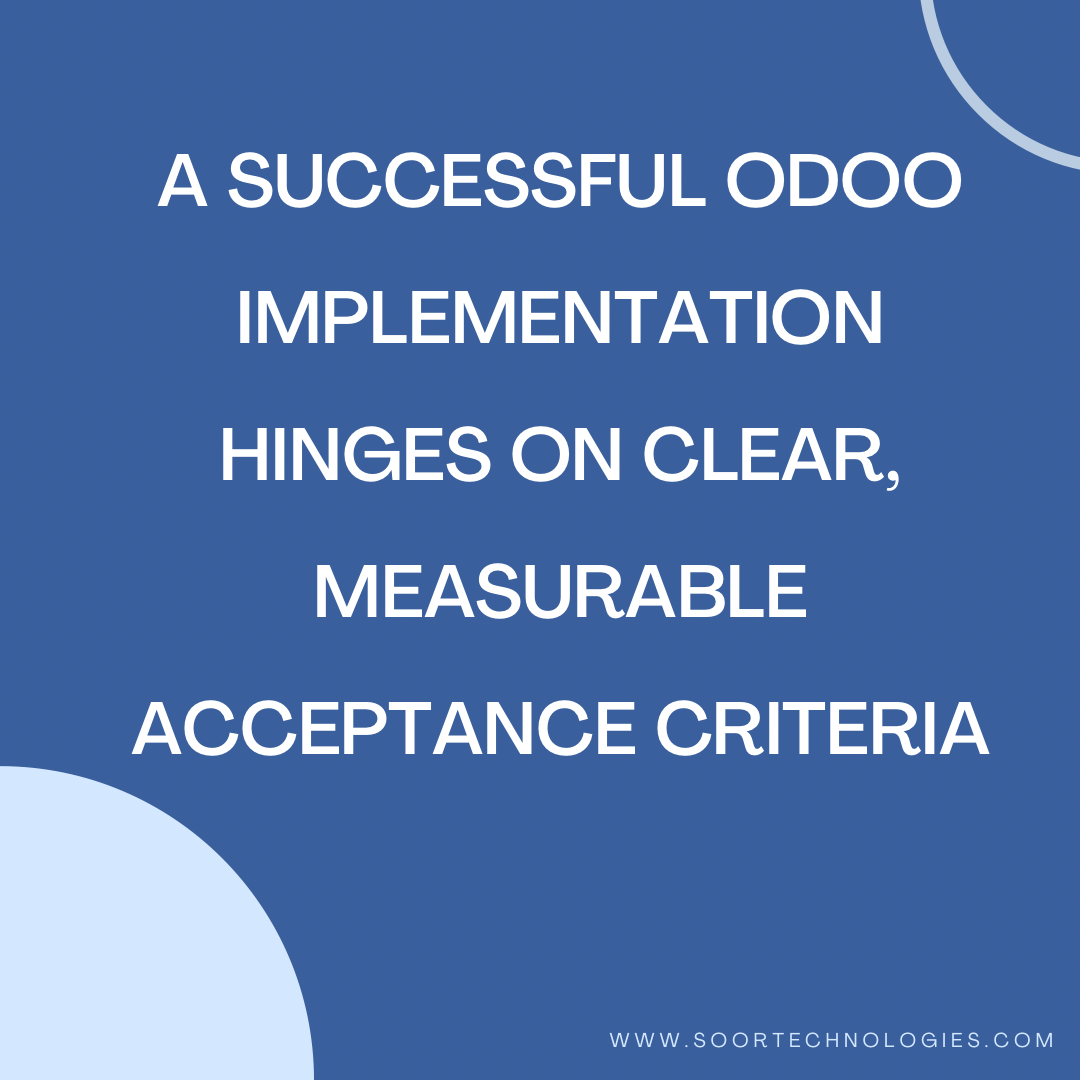
When implementing an Odoo ERP system, ensuring that all requirements are met is crucial for the project’s success. However, one common challenge teams face is confirming whether certain requirements have been fully addressed. This often happens due to a lack of measurable acceptance criteria, which are essential for validating that the implemented solution aligns with business needs.
At Soor Technologies, we believe that defining clear, measurable acceptance criteria is a cornerstone of successful Odoo implementations. Here’s how this principle can be applied effectively to avoid pitfalls and ensure project success.
Why Measurable Acceptance Criteria Matter in Odoo Projects
Acceptance criteria are the conditions that a requirement or feature must satisfy to be considered successfully implemented. When these criteria are not defined clearly during the planning phase, it becomes challenging to:
• Validate that the Odoo modules meet the client’s needs.
• Ensure smooth testing and avoid discrepancies.
• Confirm stakeholder satisfaction with the delivered solution.
For example, in an Odoo implementation, a vague requirement like “the system should handle invoices” is not enough. Measurable acceptance criteria could be:
• “The system should generate an invoice in under 10 seconds.”
• “The invoice should display the customer’s name, purchase details, tax information, and payment terms.”
Steps to Avoid Requirement Validation Issues in Odoo Implementations
1. Collaborate with Stakeholders
Early collaboration with stakeholders ensures all requirements are gathered comprehensively. Using Odoo’s project management tools, you can track discussions and ensure no requirement is overlooked.
2. Define Measurable Acceptance Criteria
Break down high-level requirements into specific, testable conditions. For instance:
• Requirement: Automate inventory updates.
• Acceptance Criteria: Inventory should update in real-time when a sales order is confirmed.
3. Use Odoo’s Testing and Validation Features
Odoo’s Quality module and testing tools allow you to validate whether processes meet predefined criteria. Automating validation workflows ensures consistent outcomes.
4. Utilize Odoo’s Requirements Traceability
Leverage a Requirements Traceability Matrix (RTM) to track each requirement from elicitation to testing and delivery. This ensures that no requirement is missed during implementation.
5. Engage Stakeholders During Testing
Allow stakeholders to participate in the User Acceptance Testing (UAT) phase. Using Odoo’s demo environments, stakeholders can verify if the system meets their expectations based on the acceptance criteria.
How Soor Technologies Ensures Successful Odoo Implementations
At Soor Technologies, we:
• Partner with clients to identify business needs and translate them into detailed, measurable requirements.
• Use Odoo’s robust capabilities to configure, customize, and test solutions against defined acceptance criteria.
• Provide ongoing training and support to ensure stakeholders understand the solution and can validate its effectiveness.
Conclusion
A successful Odoo implementation hinges on clear, measurable acceptance criteria. By focusing on this key aspect, businesses can ensure that their Odoo ERP system aligns with their needs, streamlines operations, and delivers measurable value. At Soor Technologies, we are committed to helping businesses achieve seamless and impactful Odoo implementations.
Follow us on LinkedIn and explore our blog for more insights into Odoo implementations, tips, and best practices. Let’s make your Odoo journey a success!
#Odoo #Kuwait #Implementation #ERP #RequirementsValidation #BusinessSolutions #SoorTechnologies
VIEW SOOR TECHNOLOGIES POSTS ON LINKEDIN